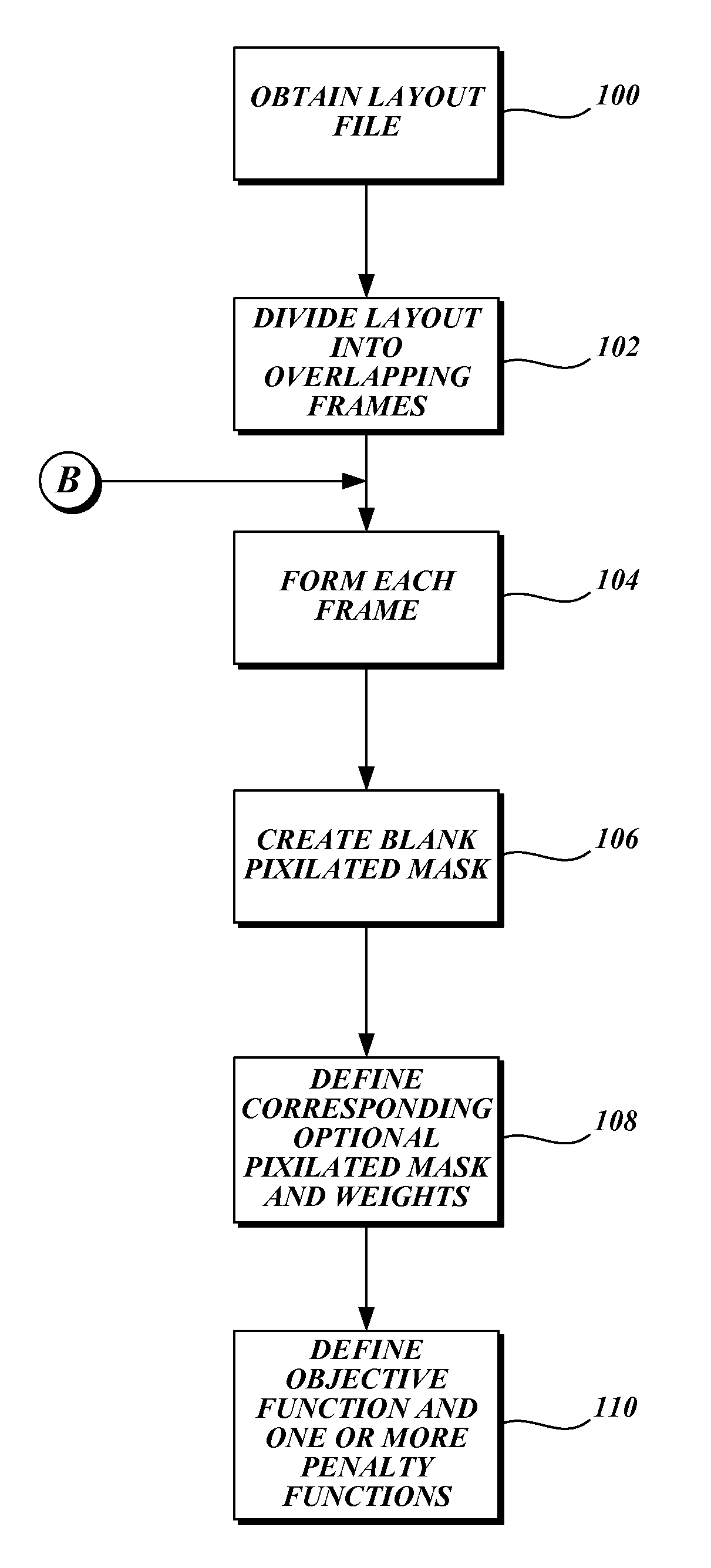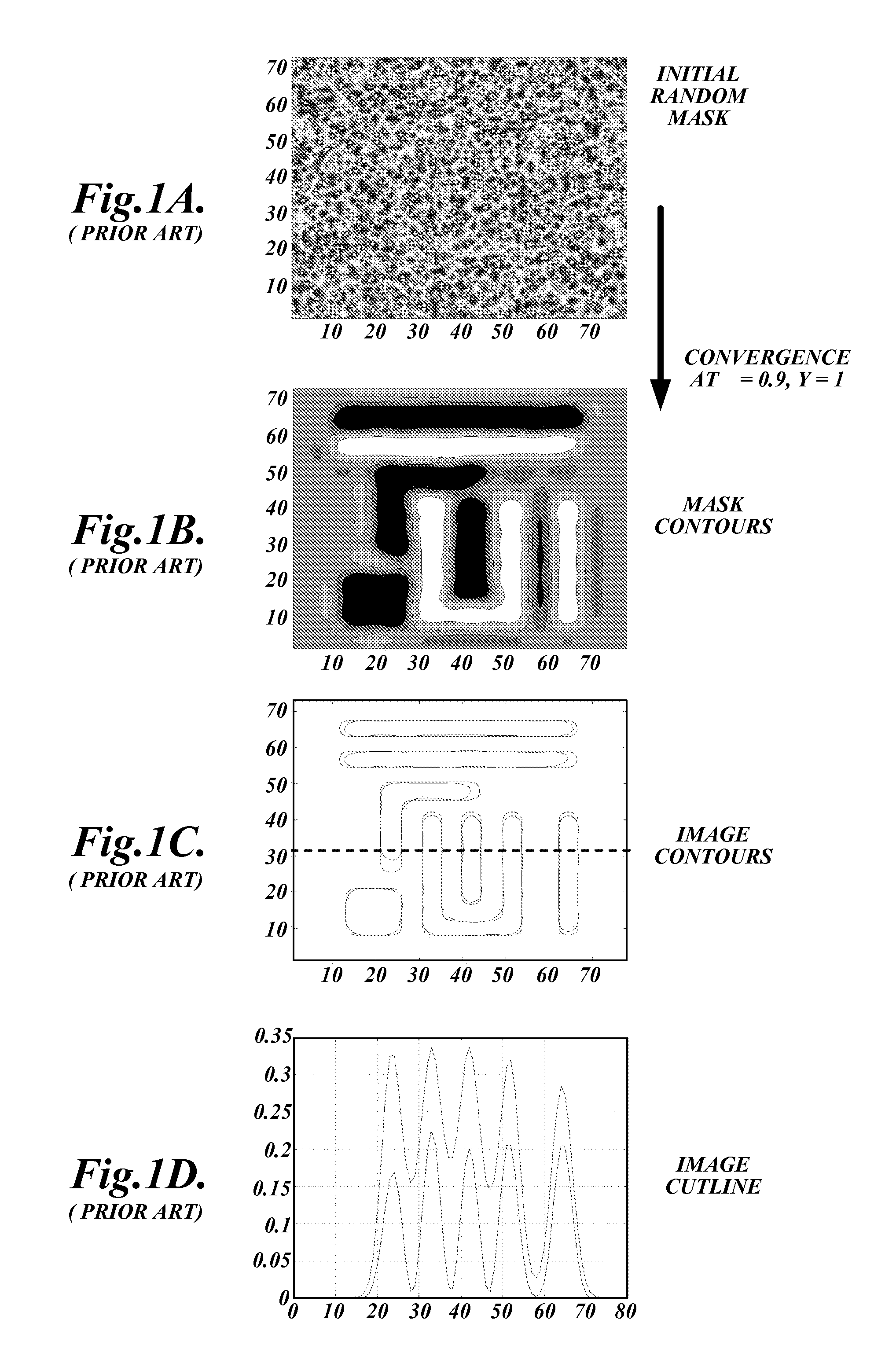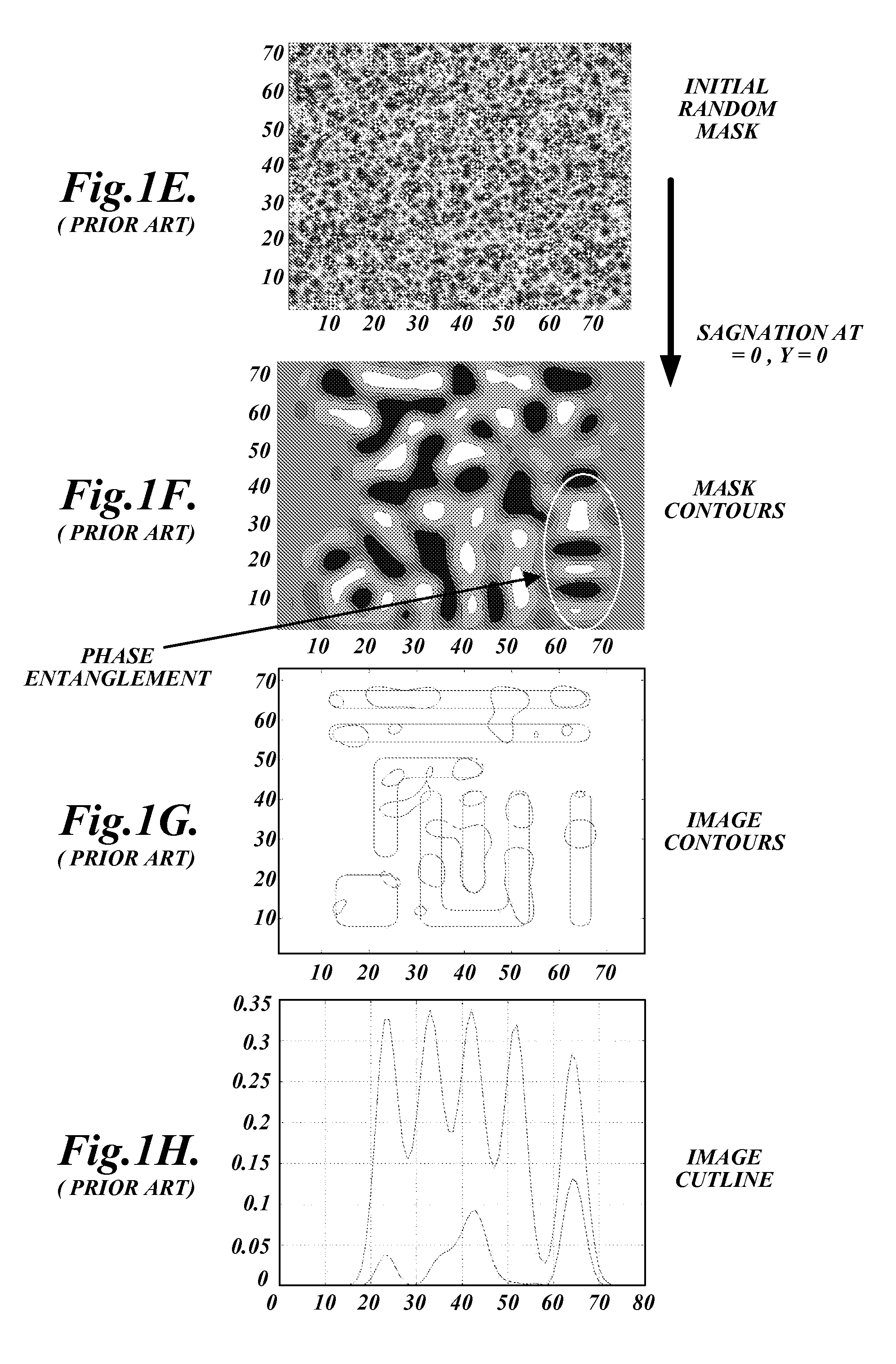Calculation system for inverse masks
a calculation system and mask technology, applied in the field of photolithography, can solve the problems of complex problems, inability to solve intrinsically simple problems, and easy pixel flipping in local minima, and achieve the effect of improving fidelity
- Summary
- Abstract
- Description
- Claims
- Application Information
AI Technical Summary
Benefits of technology
Problems solved by technology
Method used
Image
Examples
Embodiment Construction
[0029]As will be explained in further detail below, the present invention is a method and apparatus for calculating a mask pattern that will print a desired layout or portion thereof on a wafer. FIG. 19 illustrates a representative computer system that can be used to calculate a mask layout pattern in accordance with one embodiment of the present invention. A computer system 50, including one or more programmable processors, receives a set of executable instructions on a computer-readable media 52 such as a CD, DVD, or from a communication link such as a wired or wireless communication network such as the Internet. The computer system 50 executes the instructions to read all or a portion of a desired layout file from a database 54 or other storage media. The computer system 50 then calculates data for a mask layout by dividing a mask layout into a number of discrete pixels. The computer system determines the transmission characteristic of each of the pixels so that the result on a w...
PUM
 Login to View More
Login to View More Abstract
Description
Claims
Application Information
 Login to View More
Login to View More - R&D
- Intellectual Property
- Life Sciences
- Materials
- Tech Scout
- Unparalleled Data Quality
- Higher Quality Content
- 60% Fewer Hallucinations
Browse by: Latest US Patents, China's latest patents, Technical Efficacy Thesaurus, Application Domain, Technology Topic, Popular Technical Reports.
© 2025 PatSnap. All rights reserved.Legal|Privacy policy|Modern Slavery Act Transparency Statement|Sitemap|About US| Contact US: help@patsnap.com



